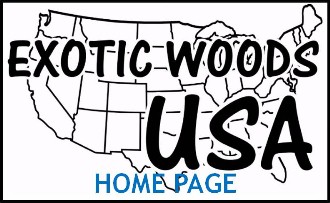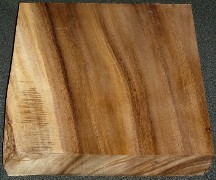Exotic Wood Facts |
|
Monkey Pod Monkey-pod (Pithecellobium saman), samon in Spanish, is a fast-growing tree that has been introduced to many tropical countries throughout the world from its native habitats in Central America and northern South America. It is known under a wide range of common names, such as Albizia Saman, Saman, Rain Tree, and of course Monkey Pod. The tree is believed to be introduced into Hawaii in 1847, when Peter A. Brinsmade, a businessman visiting Europe, returned to Hawaii with two seedlings. One of the seedlings was planted in downtown Honolulu, the other at Koloa on the island of Kauai. These two seedlings may be the progenitors of all the monkey-pod trees now found in Hawaii. Monkey-pod wood is normally considered easy to work due to its low shrinkage during drying allowing it to be machined while green, but may be difficult at times due to its cross grain. Items made from green wood can be dried without serious drying degrade. In Hawaii, monkey-pod has been the premier craftwood used for carved and turned bowls since the 1940's. As labor costs increased, however, the industry spread to the Philippines and Thailand, which now supply most of the monkey-pod bowls for which Hawaii is famous. |
|


